vegetarian
now browsing by tag
Vegan Life in Sarasota, FL
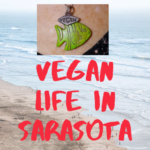
Vegan goes mainstream.
I’m always willing to try the latest food craze, and my interest was on high alert when I met Chantal; a petite woman with a T-shirt proudly displaying VEGAN on the front. (She made it.) We made plans to meet for lunch at a later date where I would pick her brain about being a vegan. Recently, I’m just getting away from the Keto diet; a very meat and dairy based diet, and to tell you the truth, it was really against my grain to eat all the animal products. A vegan diet was something that sounded more like my style. Tip! Watch the movie Forks Over Knives available on Netflix.
Vegan VS. Vegetarian
The most asked question when I say VEGAN is what is the difference between a vegan and a vegetarian? Vegetarians will not eat meat but will consume animal products such as dairy. Vegans will not eat any animal products and some go so far as to not eat anything that has a connection to animals. For example, honey.
On a beautiful day in July, I met with Chantal at Simon’s Restaurant in Sarasota, FL. Hesitant at first to go to Simon’s because of an unpleasant experience I had around 10 years ago, I decided to give them another try after Chantal suggested it is a good spot for a vegan meal.Glad I did.
Simon’s is located in a unimpressive strip mall, but once inside we found a very inviting atmosphere of cafe tables and a friendly wait staff. Here is a picture of the menu board with interesting looking choices.
We ordered an Indian vegan dish, and I began my interview. Chantal said she came from a typical middle class family where dinner was served at the kitchen table each night. Meat, starch, and vegetables. Only on special occasions would they have dessert, and snacks like potato chips were rarely found in the house. Sounds like how most baby boomers grew up, The standard American diet. (However, Chantal grew up in the suburbs of Montreal. She is an anglophone, by the way.)
Let me describe Chantal. A charming woman with a shocking strip of white in her brown hair. Obviously in great physical shape and perfectly thin. I’d have to admit the vegan lifestyle looks good on her.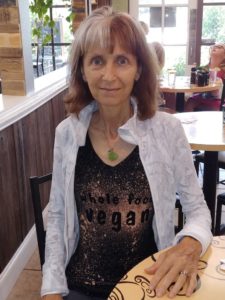
She said the transition to becoming a full-fledged vegan was gradual. A dying aunt told her to be careful of her health, and that inspired Chantal to slowly become a vegetarian before becoming a vegan. She admits that she ate a lot of carbs and not good carbs during this period. I also admitted that years ago I was a junk-food vegetarian. And I thought I was doing good as long as I didn’t eat meat. Wrong!
There are 3 different kinds of vegans:
- Dietary vegan: Person for health reasons only.
- Ethical vegan: A person who doesn’t want to eat animal products because they believe in the ethical treatment of animals.
- Environmental vegan: People who believes that mass producing animals and animal products is not good for the environment.
Chantal stressed that she likes to use whole foods as much as possible and stays away from processed foods not even using oils in cooking because they are processed. I asked her what she uses instead of oil for let’s say frying. Water!
Veganism is the practice of abstaining from the use of animal products, particularly in diet, and an associated philosophy that rejects the commodity status of animals.[b] A follower of the diet or the philosophy is known as a vegan.[c] Distinctions may be made between several categories of veganism. Dietary vegans (also known as strict vegetarians) refrain from consuming animal products, not only meat but also eggs, dairy products and other animal-derived substances.[d] The term ethical vegan is often applied to those who not only follow a vegan diet but extend the philosophy into other areas of their lives, and oppose the use of animals for any purpose.[e] Another term is environmental veganism, which refers to the avoidance of animal products on the premise that the industrial farming of animals is environmentally damaging and unsustainable.(Source. https://en.wikipedia.org/wiki/Veganism)
Totally intrigued, I decided to go all in to the vegan diet giving up all dairy and meat. This prompted a visit to the library where I found many vegan cookbooks. One of my favorite is OH SHE GLOWS cookbook.
Chantal’s typical day
Breakfast (around 10:00 after working out in her home)
Steel Cut Oatmeal with cinnamon and sliced apples or a smoothie made with spinach, kale, wheat grass, fruit. Right now in Florida mangoes are in season, so she is using a lot of mangoes.
No lunch
Around 2:00 she will have a snack of carrot strips and homemade hummus. Her hummus recipe is:
Canned chick peas
Water
Tahini
Garlic and lemon juice
Use an immersible blender and blend away. Order your immersible blender here.
Dinner around 5:00 – 6:00
Sweet Potato Red Lentil Dahl over brown rice, is a typical dinner she makes for her husband and herself.
- 1 cup Kale, chopped.
- 1 cup Red split lentils.
- 3 cups 2 medium Sweet potatoes, diced small.
- 8 Tomatoes, sun-dried or medium sized.
- 1 Onion.
- 4 cloves Garlic, chopped.
- 1″ Ginger, peeled and chopped.
- 1 tsp Garam masala.
- Brown Rice
Kale and sweet potato dahl a great quick and tasty dish that can be made in an InstaPot it cooks a few minutes but it can be made in a normal pan. Chantal asked me if I had an InstaPot? No, I don’t because I don’t want another gadget in my kitchen. She said, “Oh you have to get one.”
She admitted that she has a sweet tooth. Fruit is a nice dessert or she has a couple of vegan desserts up her sleeve.
Vegan Brownies
Made with…
Sweet potatoes
Cacao powder
Coconut sugar
Dates
Almond butter
Vanilla
Baking soda
Sweet Potato Brownies
- 3/4 cup mashed sweet potato (1 large)
- 1 cup unsalted almond butter stirred well
- 1/4 cup pureed dates
- 1/4 cup coconut sugar
- 1/3 cup almond flour
- 4 tablespoons cacao power
- 1/4 teaspoon salt
- 1 teaspoon baking soda
- 2 teaspoons pure vanilla extract
- Instructions
Sweet Potato Brownies
-
Preheat the oven to 350 degrees Fahrenheit. Line an 8×8 baking pan with parchment paper.
-
Cook the sweet potato in the microwave on the appropriate setting until well cooked and mashes well with a fork. Place 3/4 cup of the mashed sweet potato in a large bowl, followed by the almond butter and dates. Whisk to combine.
-
Add the coconut sugar, almond flour, cocoa powder, salt, and baking soda. Using an electric mixer, or by hand, mix until evenly combined and incorporated. Add vanilla extract and mix until combined.
-
Transfer batter (it will be thick) to the prepared pan. Using a spatula or your hands, spread and pat the batter into an even layer. Bake for 20-25 minutes, until a toothpick comes out mostly clean. (24-25 minutes is about perfect for my oven.)
-
Allow brownies to cool in pan on wire rack.
IMPOSSIBLE COOKIES
Mashed bananas
Almond milk
Dates mashed
Oat Flour
Oats
Cacao powder
Salt
Baking soda
Directions:
Mix all ingredients together (Chantal doesn’t have exact amounts and does it by eye.) Press a mound about a jar lid size on parchment paper lined cookie sheet and spread almond butter on top. Bake in a 350 oven for 10 minutes. Sounds yummy!
As far as what she drinks during the day, she came in with her own water bottle, glass of course. She likes to start the day with orange juice…shockingly, not fresh squeezed. Or green tea. And water throughout the day.
I roughly calculated the total calories she consumes around 1000. Practically starvation for the majority of the American population who eat sausage bagels for breakfast, subs sandwiches for lunch with a bag of chips, and pepperoni pizza for dinner with Ben and Jerry’s ice cream for dessert all in front of the TV. Chantal calls this recreational eating.
Her tips: DON’T EAT FOR RECREATION!
- Don’t eat in front of the TV.
- Mindfully eat at the dinner table.
- Stop the distractions while you are eating.
- Eat until you are 80% full. (It’s called “hara hachi bu”. It means, eat until you are 80 percent full.
Chantal believes in Hormesis – stressing your body for anti-aging.
One of the areas where the concept of hormesis has been explored extensively with respect to its applicability is aging.[13][14] Since the basic survival capacity of any biological system depends on its homeostatic ability, biogerontologists proposed that exposing cells and organisms to mild stress should result in the adaptive or hormetic response with various biological benefits. This idea has now gathered a large body of supportive evidence showing that repetitive mild stress exposure has anti-aging effects.[15][16] Exercise is a paradigm for hormesis in this respect.[16] Some of the mild stresses used for such studies on the application of hormesis in aging research and interventions are heat shock, irradiation, prooxidants, hypergravityand food restriction.[15][16][17] Some other natural and synthetic molecules, such as celastrols from medicinal herbs and curcumin from the spice turmeric have also been found to have hormetic beneficial effects.[18] Such compounds which bring about their health beneficial effects by stimulating or by modulating stress response pathways in cells have been termed “hormetins”.[15] Hormetic interventions have also been proposed at the clinical level,[19] with a variety of stimuli, challenges and stressful actions, that aim to increase the dynamical complexity of the biological systems in humans.
She says by me stressing my body out by play 2 hours of pickleball in the hot Florida weather is good for the hormesis principle. Good to know!
Okay, I am off to a good start and I wanted more information. I went to a couple of vegan restaurants in Sarasota. Both were good and I like that there are choices in Sarasota for vegans.
I started talking to other people about a vegan diet and found out my friend Margie who I have shared many a steak dinner with is primarily a vegan now. What! The earth stopped spinning…hell was frozen over. She gave me a few tips about vegan replacement food she uses for “hamburger” and “sausage.” I found the frozen vegan food section at Publix and picked up Italian sausage patties. I thought they would go great with the pasta and sauce I was making for dinner.
This is where it gets tricky for me. I have an autoimmune disease and do not eat gluten, and will make pasta for my husband and mother, but will just have the sauce over zucchini noodles. I will also not have bread and now that I was facing a vegan diet, I would be cutting out more items to eat. I turned to eating more fruits and juicing fruits and veggies…of course organic.
Here is a list of my favorite juicers:
- Brevville 700 Watt Juice Extractor+
- Aicok Slow Masticating Juicer Extractor Easy to Clean, Quiet Motor
- Breville BJE830BSS1BUS1 Juice Fountain Cold XL, Brushed Stainless Steel Centrifugal Juicer
- Omega NC900HDC Juicer Extractor and Nutrition Center Creates Fruit Vegetable and Wheatgrass Juice Quiet Motor Slow Masticating
I recommend the movie Fat, Sick and Nearly Dead by Joe Cross for juicing inspiration. Here is the link to Joe’s website. LINK
(Joe Cross, if you are reading this…I love ya!)
Everyone thought the vegan Italian sausage tasted like the real thing, and I would most likely serve this again, but this was really processed food and I don’t want to resort to processed foods.
I found many cookbooks on vegan recipes with mouth-watering looking pictures but yikes, so complicated. I liked the simpleness of the Keto diet of throwing a steak on the grill and serving that along side a baked potato with butter and sour cream with a toss salad. More research is needed. On to YouTube.
There were many vegan YouTubers One man made baked sweet potatoes, rice, sauteed veggies, chick peas, raw veggies, etc. for the entire week and stored daily portions in plastic containers. I watched another person try going vegan for 30 days. At the end he proclaimed that he didn’t miss meat products but found it hard to eat enough calories during the day. That’s true. It would be hard to find an overweight vegan.
Here is a good Youtube video. The recipe is for Coconut Curry Chickpeas with Rice, And I made it! Delicious!. https://youtu.be/Msk8lc6KQg0
People always ask…If I go vegetarian/vegan how am I going to get my protein?
Ugh! The same old assumption that if a human doesn’t eat animal protein that they are going to shrivel up and die or something. The beef and dairy industry have done a fantastic job of brainwashing us using millions of dollars in advertisement that we absolutely need animal protein. No we don’t. The largest animals in the animal kingdom are vegetarians. Elephants. Silver-backed apes. Cows. Horses.
And plants have plant proteins. Yes, humans can live a very healthy and athletic life on plant proteins. Spinach has 5 grams of protein in 1 cup. Lentils (1 cup) has 18 grams. A person needs only 40 grams per day and that is debatable..
What about Vitamin B12?
If by consuming animal products are only way of getting the daily dose of B12, then maybe humans are supposed to be meat eaters? But then I found this info. Many, many years ago, humans ate a plant based diet. They forged daily for berries and root vegetables that they did not wash with chlorinated water before eating. The soil or microorganisms that clung to the food contained B12. Now B12 is lacking in the vegan diet because of poor soil and strenuous washing of our food before consuming, for good reason! Okay, B12 is an inexpensive supplement to purchase. Order yours here through AMAZON.
What to expect to happen to your body when you begin eating a plant-based diet
- You may lose weight.You’ll reduce inflammation in your body. If
you are eating meat, cheese, and highly
processed foods, chances are you have
elevated levels of inflammation in your body.
While short-term inflammation (such as after
an injury) is normal and necessary,
inflammation that lasts for months or years is
not. Chronic inflammation has been linked to
the development of atherosclerosis, heart
attacks, strokes, diabetes, and autoimmune
diseases, among other conditions.Studies consistently show that when people
go plant-based, their blood cholesterol levels
drop by up to 35 %. In many cases, the
decrease is equal to that seen with drug
therapy—with many positive side effects.Cravings change after two weeks because
your taste buds change.You may feel gassy and bloated.You may have more energy.
You might avoid blood sugar spikes and
crashes that impact your energy level.Your skin may glow and pesky skin issues
clear up. (sOURCE: https://www.mamasezz.com/pages/ultimate-little-guide-to-plant-based-eating)
Is going vegan easy. Heck NO! I have to say that it is a challenge and I wish anyone going down this dietary road the best of luck. In the meanwhile, I was militant about sticking to the diet in the beginning but I really found it close to impossible. Harder than eliminating sugar! Now, I’m trying to be as close to vegan as possible without driving myself crazy and occasionally having dairy.
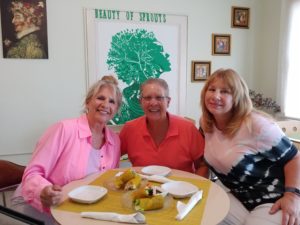
The ladies at Beauty of Sprouts in Sarasota, FL, my favorite vegan restaurant. I’m the one in the tie-dyed shirt.
Thanks for reading,
Terry Ryan
What Killed Bill Paxton?

What killed Bill Paxton by Terry Ryan
Bill Paxton, 61, actor, father, and husband, passed away Saturday, February 25, 2017 due to complications from surgery. He underwent heart surgery and suffered a stroke afterwards. (Source: TMZ)
Potential Complications During and After Heart Surgery
Some of the more common complications of heart surgery are routinely dealt with during the hours and days of recovery in the hospital. The patient is closely monitored for these complications by staff.
- Bleeding: May occur at the incision site or from the area of the heart where surgery is performed
- Abnormal heart rhythm: In rare cases a temporary external, or permanent internal pacemaker may be necessary to correct this problem.
- Ischemic heart damage: Damage to heart tissue caused by a lack of blood flow to the heart

- Death: The risk of death is increased in surgeries where the heart is stopped for the procedure.
- Blood clots: Clots may form in and around the heart or travel through the bloodstream.
- Stroke: Often caused by clots that form in the blood after surgery
- Blood Loss: In some cases, a transfusion may be necessary.
- Emergency surgery: If a problem is discovered after surgery, an emergency surgery may be necessary to repair any problems.
- Cardiac tamponade (pericardial tamponade): A life-threatening condition where the pericardium, the sac surrounding the heart, fills with blood. This makes it difficult, or impossible, for the heart to fully function. (Source: https://www.verywell.com/heart-surgery-complications-and-risks-3156953)
Other side-effects include heart attack, respiratory complications, bleeding complications, infections, high blood pressure and stroke. When the vessels around the heart are clamped shut during the operation, plaque breaks off of the inner walls. Blood then carries this debris to the brain, where it causes numerous “mini” strokes.
About 70-80% of patients undergo bypass surgery remain free of chest pain (angina) for one year. But this doesn’t last forever. Within three years of the operation, up to one-third of patients will suffer from chest pain again.
Long-term studies indicate that only certain subsets of heart disease patients live longer because of their bypass operation.
What to do? A vegetarian diet could prevent and even reverse heart disease.
If all the parts of your circulatory system—the veins, arteries and capillaries—were placed end to end, they would stretch for more than 60,000 miles. That’s more than two times around the earth! But one tiny blockage could bring all 60,000 miles to a halt. Doctors use many medicines and surgical procedures to keep the system running.
But back in 1990, a major shift began in medical practice. That was the year that a young doctor in California published a study that set out to test whether heart disease could not simply be prevented, but might actually be reversed. And he wanted to see if it could be done, not with surgery or drugs, but with diet and lifestyle changes alone.1 This notion was inconceivable to some. After all, heart disease was a one-way street unless it was treated with cholesterol-lowering drugs, heart pills, and when needed, open-heart surgery.
Dr. Dean Ornish, a Harvard-trained physician, studied 47 patients in the San Francisco Bay Area, all of whom had significant heart disease. That is, the coronary arteries that brought blood and oxygen to their hearts were starting to narrow, pinching off blood flow and threatening the viability of the heart. Some had already had heart attacks. He assigned half of the patients to a control group that received the standard care that doctors usually prescribe, meaning a diet centered on “lean” meat, poultry, and fish, along with various medications and the usual advice not to smoke.
The remaining patients were assigned to a very different program. They were asked to follow four steps:
- A low-fat, vegetarian diet
- Brisk walking for a half-hour per day or an hour three times per week
- No smoking
- Stress management exercises
He used a vegetarian diet, because cholesterol and saturated fat are found mainly in animal products. So the prescribed diet excluded red meat, poultry, and fish, virtually eliminating cholesterol and animal fat. It reduced all sources of fat, including vegetable oils. But Dr. Ornish used no drugs at all—not even cholesterol-lowering drugs. The program consisted only of simple diet and lifestyle changes.
One year later, all patients had an angiogram—a special x-ray that reveals the blockages in the coronary arteries, and the results were compared to the same sort of test done at the beginning of the study. The results made medical history. The control-group patients, who had been following the more traditional medical routine, had not generally improved. In fact, the blockages in their coronary arteries were worse, on average, than at the beginning of the study. They still had chest pain and still needed medications. That was not news. Despite typical heart treatments, heart disease usually worsens as time goes on.
For the patients in the experimental group, however, the story was very different. Chest pain began to disappear within weeks. Their cholesterol levels dropped dramatically. And their coronary arteries, which had been gradually closing off, year after year, were actually starting to reopen. In fact, the effect was so great that angiograms showed clear evidence of reopening in 80% of patients in the first year.
These results were published in The Lancet in 1990 and gave doctors a new tool for reversing heart disease. The program cost much less than surgery, was surprisingly easy to follow, and could help keep patients healthy over the long run. The only “side effects” were good ones: the average patient lost 22 pounds in the first year!
A Cleveland Clinic surgeon, named Caldwell Esselstyn, used the same type of diet for severely ill heart patients.Some of the patients had been told they had less than a year to live. But of the 17 patients who stuck to the program, there was not a single cardiac event over the next 12 years! They were alive and well—and had reversed their disease. (source: https://www.pcrm.org/about/volunteer/preventing-and-reversing-heart-disease)
The Bill Clinton Diet
When President Bill Clinton suffered from debilitating chest pain, he was living on the typical American diet of meat and potatoes.
In the White House, Bill Clinton’s appetite was legend. He loved hamburgers, steaks, chicken enchiladas, barbecue and french fries but wasn’t too picky. At one campaign stop in New Hampshire, he reportedly bought a dozen doughnuts and was working his way through the box until an aide stopped him.
Former President Clinton now considers himself a vegan. He’s dropped more than 20 pounds, and he says he’s healthier than ever. His dramatic dietary transformation took almost two decades and came about only after a pair of heart procedures and some advice from a trusted doctor. (Source: http://www.cnn.com/2011/HEALTH/08/18/bill.clinton.diet.vegan/)
http://thehill.com/blogs/in-the-know/in-the-know/270806-bill-clinton-going-vegan-has-kept-me-alive
CNN: Dr. Ornish Discusses Bill Clinton’s Dramatic Weight Loss with Wolf Blitzer
Instead of people waiting for heart disease to stop them in their tracks, start adopting a vegetarian diet. Not only will your heart “thank you,” but so will your eyes, your skin, your everything. Your life.
Conventional medicine is great! You have a broken leg, infected toe, sore throat, etc. they are there for you and can help you heal. But they can’t do all the work. It is up to you to take the mature steps to a healthy and long life. That means taking care of yourself, unless you want to someday lay on a table in an operating room counting down from 100 for the anesthesia to kick in. As we all know from what happened to Bill Paxton, that outcome is not always in your favor.
Things to stop right now for a better life:
- Give up smoking (Are you kidding? You are still smoking?)
- Alcohol…nope
- White sugar – the devils poison. Stop eating sugar
- Eating things like prime rib. Come on! Self-explanatory
- Not taking time to smell the roses. Stress is a killer!
- Illegal drugs (Bad idea)
I’d like to add that Bill Paxton was one of my favorite actors, and I am so sorry for his family’s loss. What a tragedy and was it possibly preventable with a vegetarian diet. That question will never be answered. He could have had a family history of heart disease and genetics played a big part in this equation.
My suggestion is put the odds in your favor. People depend on you and you deserve a healthy and happy life. Eat more vegetables!
Thanks for reading!
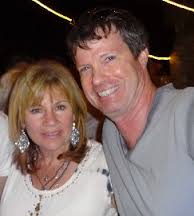 Terry Ryan, Health Blogger
Terry Ryan, Health Blogger
Where Do People Live The Longest?

 Where do people live the longest? If you watched the CNN report on Sunday, March 15, 2015, you would have seen the show called The Blue Zones. It was based on the book with the same name by author Dan Buettner.
Where do people live the longest? If you watched the CNN report on Sunday, March 15, 2015, you would have seen the show called The Blue Zones. It was based on the book with the same name by author Dan Buettner.
“People in the Blue Zones reach age 100 at 10 times the average rate. What’s their secret?”

a key point in life longevity. Here are the 9 key characteristics: Power 9 principles from The Blue Zones:
- Move Naturally The world’s longest-lived people don’t pump iron or run marathons. Instead, their environments nudge them into moving without thinking about it.
- Purpose Why do you wake up in the morning? Knowing your sense of purpose is worth up to seven years of extra life expectancy.
- Down Shift Stress leads to chronic inflammation, associated with every major age-related disease. The world’s longest-lived people have routines to shed that stress.
- 80% Rule “Hara hachi bu” – the Okinawans say this mantra before meals as a reminder to stop eating when their stomachs are 80 percent full.
- Plant Slant The cornerstone of most centenarian diets? Beans. They typically eat meat—mostly pork—only five times per month.
- Wine @ 5 Moderate drinkers outlive non-drinkers, especially if they share those drinks with friends.
- Belong Attending faith-based services four times per month – no matter the denomination – adds up to 14 years of life expectancy.
- Loved Ones First Centenarians put their families first. They keep aging parents and grandparents nearby, commit to a life partner and invest in their children.
- Right Tribe They world’s longest lived people chose or were born into social circles that support healthy behaviors.
Thank you for reading. To your health!
Terry Ryan

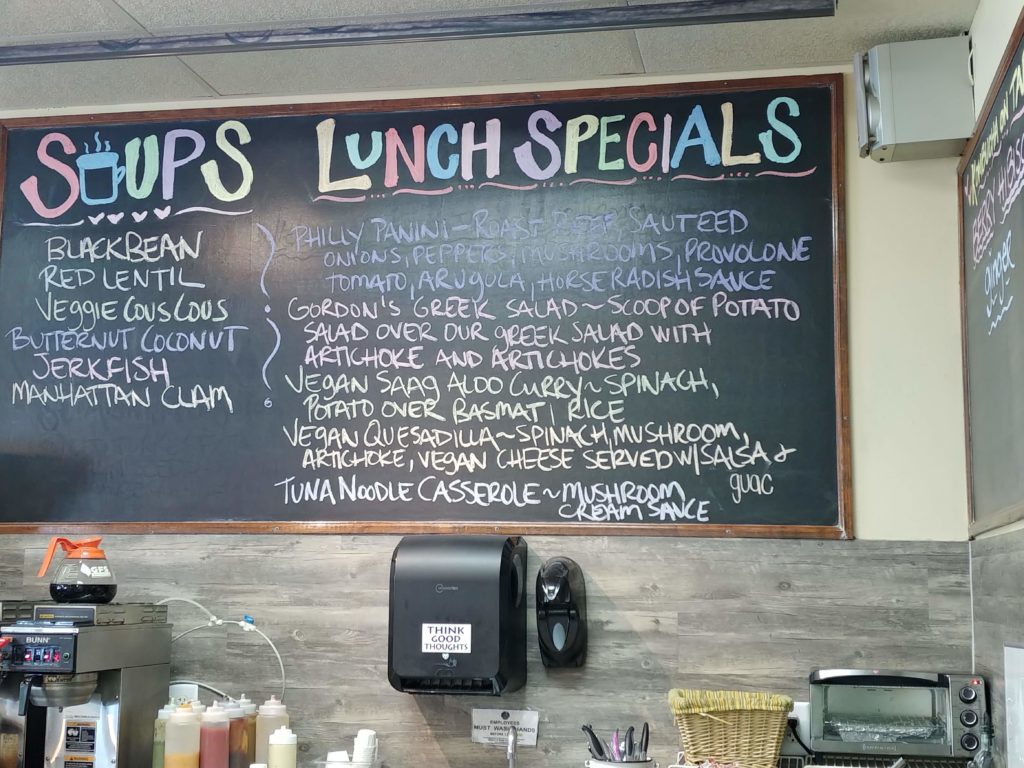
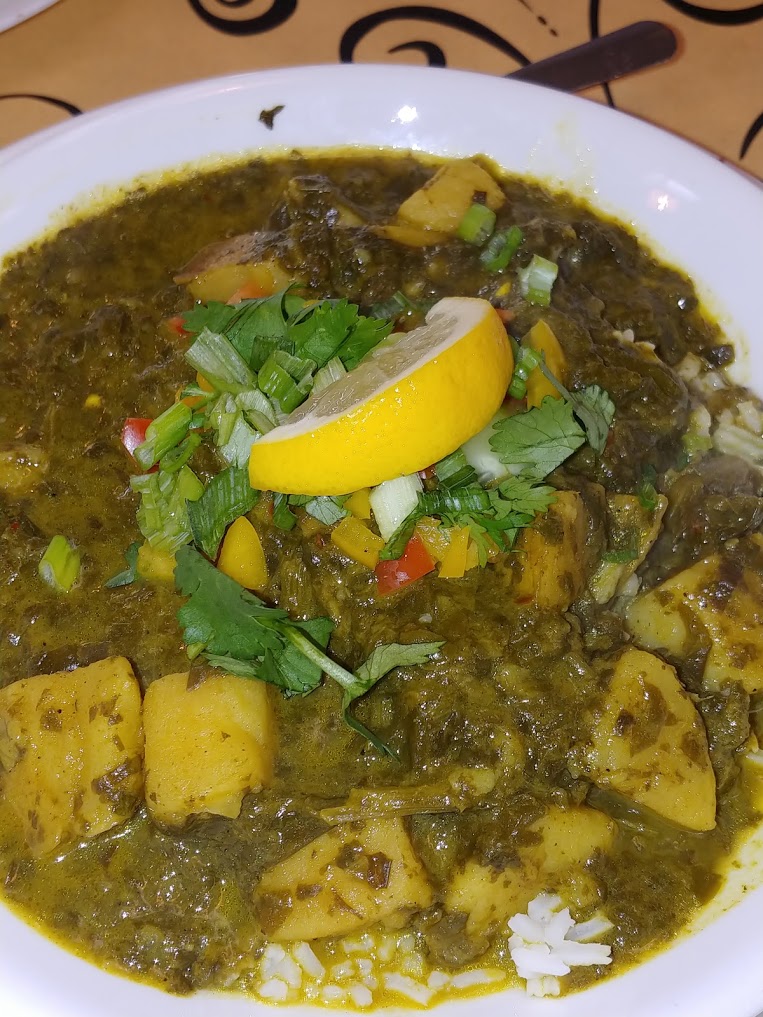
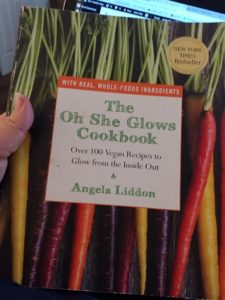
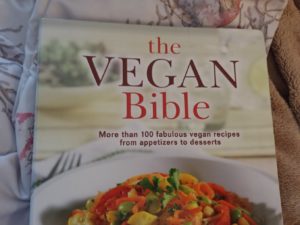
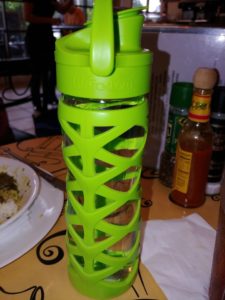
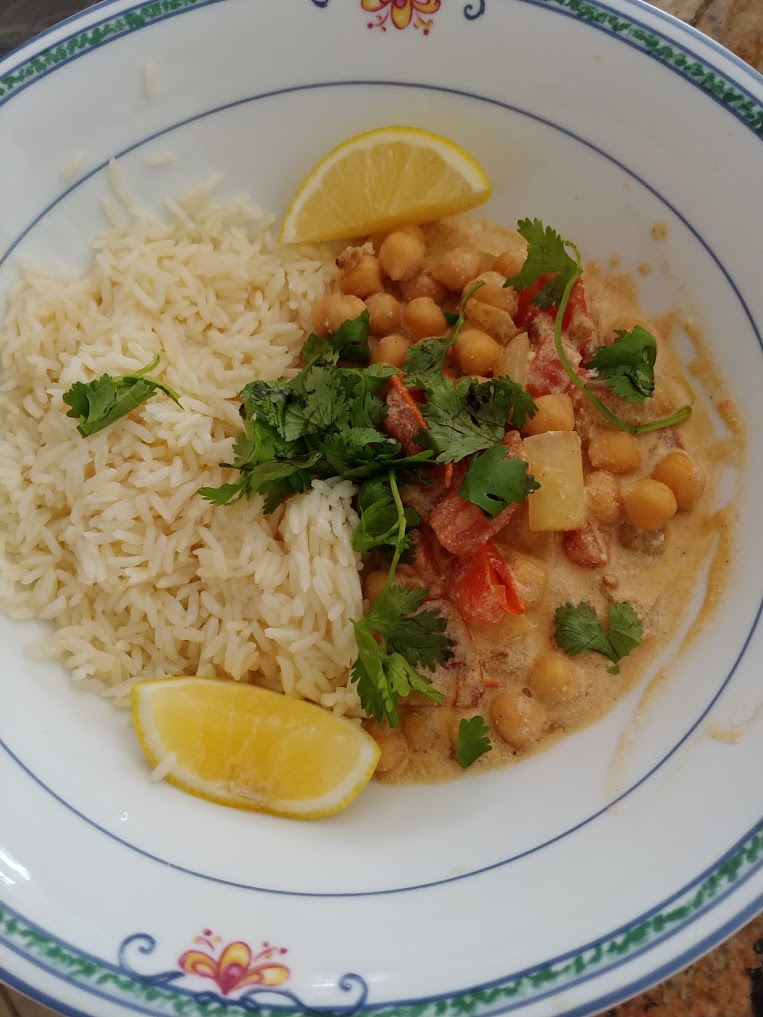
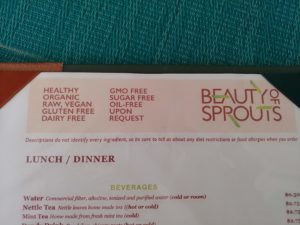




 D5 Creation
D5 Creation